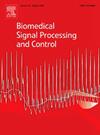Optical surface imaging-driven tumor tracking with deformable image registration-enhanced deep learning model for surface-guided radiotherapy
IF 4.9
2区 医学
Q1 ENGINEERING, BIOMEDICAL
引用次数: 0
Abstract
We propose a patient-specific external-internal correlation model driven by optical surface imaging (OSI) for intra-fractional respiration-induced tumor motion and deformation tracking. A retrospective-prospective database was established enrolling 276 lung cancer patients undergoing 4D-CT imaging. Retrospective patients were divided into cohorts for training/cross-validation (Cohort-T-CV) and testing (Cohort-Test), whose body surfaces were extracted from 4D-CT phases to compensate for limited data volume of paired OSI-CT images. Prospective patients consisted of paired data for additional validation (Cohort-Add-V). Respiration-induced tumor motion and deformation are predicted in form of deformable 3D masks, with different phases as starting and ending points of prediction task. Deformable image registration (DIR) was performed to obtain Jacobian determinant map as one of input channels to enhance voxel-wise deformation details for mask inference. Residual-blocks and spatial attention gates were integrated into U-net-based architecture to build DIR-enhanced model 3D-U-RAD for external-internal correlation. Predictions of 3D-U-RAD and 3D-U-RA (simplified without DIR-enhancement) were evaluated with absolute/relative deviations of centroid (/), Dice similarity coefficient (), 95 % Hausdorff-Distance (), and absolute/relative volume changes (/). Amplitude motion prediction errors of 3D-U-RAD are 0.61 ± 0.46 mm and 0.59 ± 0.47 mm on Cohort-Test and Cohort-Add-V, respectively. In deformation prediction, are respectively 0.80 ± 0.04 and 0.81 ± 0.03, are 4.05 ± 1.25 mm and 3.90 ± 1.52 mm, and are 1.01 ± 0.65 cm3 and 1.12 ± 0.64 cm3 on the two cohorts, respectively. Except in left–right direction, results of 3D-U-RAD are significantly superior to 3D-U-RA ( < 0.05) in all other evaluation indicators. Driven by OSI, the proposed framework has feasibility to facilitate patient-specific accurate, non-radiative, and non-invasive tumor tracking for intra-fractional radiotherapy.
求助全文
约1分钟内获得全文
求助全文
来源期刊

Biomedical Signal Processing and Control
工程技术-工程:生物医学
CiteScore
9.80
自引率
13.70%
发文量
822
审稿时长
4 months
期刊介绍:
Biomedical Signal Processing and Control aims to provide a cross-disciplinary international forum for the interchange of information on research in the measurement and analysis of signals and images in clinical medicine and the biological sciences. Emphasis is placed on contributions dealing with the practical, applications-led research on the use of methods and devices in clinical diagnosis, patient monitoring and management.
Biomedical Signal Processing and Control reflects the main areas in which these methods are being used and developed at the interface of both engineering and clinical science. The scope of the journal is defined to include relevant review papers, technical notes, short communications and letters. Tutorial papers and special issues will also be published.
 求助内容:
求助内容: 应助结果提醒方式:
应助结果提醒方式:


